Student Spotlights
Students majoring in Spanish have many opportunities to conduct independent research and pursue creative projects, either as part of their coursework, in independent studies, or as part of the Distinguished Major Program. Students who want to conduct research but do not meet the eligibility requirements for the DMP, or cannot fit the coursework into their schedules, are encouraged to consult research opportunities identified by the Office of Undergraduate Research (OUR). The grants office at OUR can help you find funding and direct you toward programs in your area of interest, such as science, social science, humanities, and public outreach.
To learn more about our students and their work at UVa and beyond, please follow the links below:
Alumni Profiles

Name & Graduation Year: Vicki Reyes Hernández (CLAS 2019)
Hometown: Silver Spring, Maryland
Major/s and minor: Speech Communication Disorders & Spanish
Why did you decide to study Spanish?
Spanish is an integral part of my identity as a Latina-American. My Spanish learning was disrupted when I was a child, and as a result I could only understand the language but not speak it. I didn't want there to be a language barrier between me and my family, so I took my language learning into my own hands. Since enrolling in Spanish 101 in high school, I knew that I would continue my formal Spanish learning because I fell in love with the language, from its grammar to its historical underpinnings, everything! When I entered UVA, majoring in Spanish was a no-brainer. It became even more personally significant that I continue studying Spanish in order to demonstrate that learning Spanish--or any language for the matter--benefits all learners regardless of their cultural background.
What were your classes like?
My classes were intimate and captivating. Many of my favorite UVA professors are part of the Spanish department. More often than not, I would leave my Spanish class feeling awe-inspired and would be reminded of what a privilege it is to be learning under world-renowned instructors who are the best in their fields. At first, I was intimidated by my professors' expertise and accomplishments, but their passion for language and literature pushed me to hone my critical thinking skills and Spanish. Also, I found the learning environment my professors created to be welcoming and inclusive. As a Latina who can be self conscious of her Spanish, my professors empowered me to speak up, both in and outside of the classroom. Once I looked past their extensive résumés, many of my Spanish professors were easy to relate to and I would always enjoy chatting with them during office hours. If you want to meet a certain professor, I highly recommend simply emailing them and scheduling a meeting to speak with them about anything. Some of my fondest memories at UVA took place in the Spanish department.
What about outside of the classroom? Were there opportunities for research or community service?
I personally didn't conduct research in Spanish, but I was interested in the Distinguished Major Program, which allows students who are passionate about Spanish to conduct research and write a thesis. Since I graduated early, I didn't do the DMP, but I've had the opportunity to speak with various faculty members about their own research. If you're interested in research, I highly recommend reaching out to faculty because you never know if it could lead to something bigger! As for other opportunities, the Spanish department sends out regular announcements with information about local events, from plays to lectures, so keep an eye out for that. I personally was very involved in my Latina-based sorority (Sigma Lambda Upsilon/Señoritas Latinas Unidas Sorority, Inc.) and the Latinx Student Alliance, two platforms that allowed me to further explore the Spanish language and Latinx cultures through community service, social events, and advocacy.
Do you use Spanish in your career or graduate program?
Yes! One of my career goals was to further develop my Spanish, especially my professional Spanish. Currently, I am working with children with autism as a Registered Behavior Technician (RBT). Many times, non-English speaking families do not receive necessary resources or services, especially medical related ones, because of language barriers. Being a bilingual RBT allows me to expand my company's clientele and ultimately give help to those who need it. Lastly, as an aspiring bilingual speech language pathologist, I'm interested in pursuing a graduate program that has a bilingual/multicultural track. This is especially important to me because unfortunately many times not knowing English is equated to having some sort of language deficit or even a disorder/disability. I strive to dispel this myth by engaging in work that allows me to work and communicate with underserved populations.
What would you want other students to know about majoring in Spanish?
You are in control of your language learning, so take advantage of opportunities to further develop your language skills and to expand your knowledge of cultures that aren't your own. The classroom can teach you only so much. Go beyond the UVA bubble, support local Latinx businesses, study abroad! As college students, learning a language is a privilege, and once you've chosen to pursue it, it then becomes a responsibility. Being multilingual gives you the chance to break down linguistic and cultural barriers, and to ultimately connect people. So don't limit your Spanish major/minor to the classroom; apply it to the real world.
Thank you, Vicki, for sharing your thoughts with us!
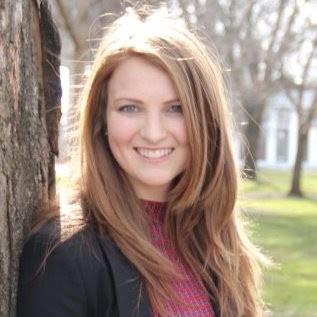
Name & Graduation Year: Sarah Wyckoff (CLAS 2017)
Hometown: Bethesda, Maryland
Major/s and minor: Chemistry with a Certification in Biochemistry; Spanish
Why did you decide to study Spanish?
My elementary school offered Spanish classes, and I was fortunately able to continue uninterrupted through high school. After discovering a passion for medicine, I knew I wanted to continue building on my language skills while developing an appreciation for the rich cultures of others. Despite a growing Spanish-speaking population, relatively few doctors in the United States are Spanish speakers. Language skills combined with cultural humility are essential for serving patients from a variety of backgrounds with varying access to resources. True language and cultural congruency can foster deeper, more personal patient-doctor relationships, and promote health equity.
What were your classes like?
Because of the small class size, I was able to have more thoughtful discussions and interactions with my peers. Our world-class instructors cultivated an environment where everyone was encouraged to share their perspective. Additionally, I really appreciated the breath of subject matter covered by the department, particularly the courses centered on the indigenous peoples of Central and South America. Most of my Spanish education prior to UVA was very European-centric, and I was inspired by the commitment to broadening our education, especially given the relevance to the Hispanic and Latino population within the United States.
What about outside of the classroom? Were there opportunities for research or community service?
Studying abroad through the UVA in Valencia program was a highlight of my undergraduate experience. It was my turning point in developing the confidence to speak Spanish publicly. The opportunity to fully immerse myself in learning another language and culture was an incredible privilege, and I’m so grateful to my host family and instructors for their encouragement and support.
Do you use Spanish in your career or graduate program?
I am currently a medical student at Columbia University’s Vagelos College of Physicians and Surgeons. The school is situated in the heart of the Washington Heights neighborhood, where over 70% of residents are primarily Spanish-speaking. Given the needs of the community, Columbia launched a successful cultural immersion and Spanish language curriculum “Dígame” centered on increasing medical Spanish knowledge and cultural humility while supporting students in becoming certified medical interpreters. I’m an active participant in the program and recently passed my official medical interpreter certification through the nationally recognized ALTA Language services. I’m looking forward to communicating directly with my patients in their own language and making a meaningful difference in efforts to deliver quality care.
What would you want other students to know about majoring in Spanish?
Majoring in Spanish is an amazing opportunity to build a meaningful and relevant skill while developing an appreciation and awareness of many rich cultures and peoples. Spanish classes at UVA were consistently my favorite courses, and the fact that I still keep in touch with my mentors and advisors so many years later speaks volumes about how formative the time was for me.
¡Gracias, Sarah, y mucha suerte en la facultad de medicina!

Name & Graduation Year: Carly Gordon (CLAS 2015)
Hometown: Fairfax, Virginia
Major/s and minor: Spanish and Psychology; minor in Global Sustainability
Why did you decide to study Spanish?
I was lucky that my public elementary school offered a Spanish Immersion Program. We weren't taught Spanish, but, rather, from the first day of first grade, we were taught math and science in Spanish. We had to catch on or fall behind in our classes. It's a great way for anyone to learn a language, but especially young children who can absorb languages like sponges. From then, education and Spanish went together for me. Learning a language is a great brain stretch and I think made me better in my other classes. It wasn't so much that I chose a Spanish major, but rather I enjoyed taking the classes so much that I just happened to pick up a major along the way!
What were your classes like?
Spanish classes were highly varied. It's awesome and helpful to have the skills of a second language in life, but there are also indirect lessons that can be learned from language. In a special topics seminar I took my fourth year with Allison Bigelow, we translated text from a handwritten colonial-era journal. Lessons I learned from this process and team effort still influence the way I communicate complex ideas today.
What about outside of the classroom? Were there opportunities for research or community service?
When I was a student, studying abroad for the major was optional. I thought, as a transfer student, that I would not have the time to study abroad during my three years at UVa. Fortunately, I was able to study abroad in Valencia over the summer. I decided to study abroad without knowing anyone in the program. I had never traveled abroad without family before, so the summer gave me such a confidence in dealing with situations I may otherwise have felt unprepared to tackle.
Do you use Spanish in your career or graduate program?
I served with AmeriCorps for two years prior to earning my MPA (Master of Public Administration) at GW. My role was with the Virginia College Advising Corps, where I was placed in a high school to address issues of college access. Many of these students face barriers to post-secondary education, from being the first in their family to be educated in the States to having a parent who only speaks Spanish. As the only Spanish speaker in the counseling department at the high school, my knowledge of Spanish and familial culture was a tool to help overcome these barriers. I continued working with higher education policy issues for Latinx/Hispanic students at Excelencia in Education, where I worked as a Graduate Intern from 2017-2019 while completing my graduate degree. I am hopeful that I can continue to work with this cause as I begin a new career in consulting in summer 2019.
What would you want other students to know about majoring in Spanish?
Being a Spanish major will set you apart. In an increasingly fractured world, the ability to cross cultural boundaries to the extent possible makes you an asset in a job setting, school setting, or educated consumer of news. More importantly, having a Spanish major listed on your résumé shows your willingness to understand others who may have a different background as your own - a quality that I believe will only increase in value.
Thank you, Carly, for sharing your experience!

Name & Graduation Year: Tamara Wilkerson (CLAS 2012)
Hometown: Richmond, VA
Major: Spanish (Linguistics)
Why did you decide to study Spanish?
I've had a love of the Spanish language since I was a little girl. In my classes in middle and high school, I always loved learning about the cultural aspects of Spanish-speaking countries. I knew that I wanted to continue my study of the language in college because I was determined to become fluent in the language and study abroad.
What were your classes like?
My classes were challenging, but so enlightening. Two professors that had a tremendous impact on my time there were my advisor - Joel Rini and Omar Velázquez-Mendoza. In their classes, I felt like I grew leaps and bounds. They gave me such an awesome linguistic perspective of the language, and I still remember some of those lectures! Outside of class, they were so willing to help when I had questions, and that meant the world to me.
What about outside of the classroom? Were there opportunities for research or community service?
I loved studying abroad! If I could tell any student at UVA (studying a language or otherwise) to study abroad, I would. That experience changed my life. Valencia was a phenomenal program and I speak abut the experiences there often. It was an invaluable opportunity.
Do you use Spanish in your career or graduate program?
Yes! I was a Spanish teacher for 4 years, so I used it in my classroom everyday. Currently, in my work as a nonprofit executive, I use it when I am in the community or volunteering.
What would you want other students to know about majoring in Spanish?
Learning another language is priceless. Majoring in Spanish was a wonderful experience for me, and I think you should take advantage of all UVA has to offer!
Thank you, Tamara, for sharing your insights!
Click here to learn more about Tamara Wilkerson's award-winning work in the classroom and the non-profit sector. You can also follow her on Twitter: @Teach2Lead.
To learn more about the current fellows, how to become a teacher, or support the African American Teaching Fellows program in Charlottesville and Albermarle County, please visit the AATF page.
Not in Charlottesville? The Institute for the Recruitment of Teachers is a nation-wide effort to address the lack of diversity in K-12 and higher education. For more information on how to apply to be an IRT fellow, and for a list of schools that accept and fund IRT fellows for M.A. and Ph.D. programs, including UVa, please visit their page.
Research Projects
Name & Graduation Year: Jack Brake (CLAS 2018)
Hometown: Swarthmore, PA
Majors: Politics Honors; Spanish Literature and Culture
¿De qué se trata el proyecto?
Mi trabajo se trata de las iglesias cristianas en la Península Ibérica que se construyeron visigodos (Siglos V - VIII). Me interesan estas estructuras, las comunidad religiosas que contuvieron, y sus historias después de la llegada de los musulmanes a la península en 711. Seis de estas iglesias todavía existen en la región anteriormente reinada como Al Andalus. Yo investigué las maneras en que los musulmanes se pusieron en contacto con estas iglesias. Mis preguntas iniciales tenían que ver, primero, con la medida de que los cristianos continuaran a practicar su religión bajo el dominio musulmán, y segundo, con los aspectos de la arquitectura islámica apropiados desde las iglesias visigodas.
¿Cómo lo hiciste? Es decir, ¿cuáles son las etapas claves de la investigación?
Empecé a estudiar estas temas en varias clases aquí en UVA, incluyendo “Spanish Civilization and Culture” con el Profesor Gies, “Sephardic Jews and Conversos” con la Profesora Weber, y “Islamic Iberia” con el Profesor Gerli. Después, gané una beca (Harrison Grant) para viajar a España el verano pasado por un mes. Visité todas las iglesias visigodas en la sur de la península, y muchas tenían archivos/museos que me ayudaban mucho con la investigación. A volver a UVA, escribí un trabajo de unas 60 páginas. El trabajo se escribió en inglés, pero la mayoría de la investigación se completó en el castellano (y un poco en el árabe).
¿Cuáles son los resultados o conclusiones? ¿Vas a seguir investigando el tema?
Resulta que el tratamiento más o menos tolerante de los musulmanes andaluces hacia las iglesias visigodas indica un fenómeno muy típico de esta etapa histórica: la receptividad cultural (“cultural openness”). Los cristianos continuaron a practicar su fe en estas seis iglesias por más que un siglo después de 711. La mayoría emigraron al norte de la península en el siglo X no a causa de la intolerancia musulmana, sino a causa de una ansiedad cultural (i.e. el miedo de que fueron perdiendo la cultural latina/cristiana). Estas conclusiones tienen implicaciones importantes por un debate histórico/historiográfico sobre la “convivencia,” es decir la idea de que los musulmanes, cristianos, y judíos vivieron juntos en paz antes de la Reconquista (Siglos XIII-XV). Este tesis ha sido negado recientemente por muchos estudios, pero mi investigación lo apoya.
¿Por qué estudias el castellano?
He enfocado en la historia de Al Andalus porque combina mis intereses en el castellano, el árabe, la historia y la política. Mi otra concentración es la política, y las cuestiones de la tolerancia y la convivencia, especialmente entre la Occidente y el “mundo islámico,” son obviamente relevantes hoy en día. El castellano me permite investigar toda esta historia muy importante.
¡Gracias, Jack, por compartir tus experiencias e investigaciones!
Para mayores informaciones y ejemplos de los proyectos DMP, favor de visitar nuestra página.
Creative Projects
Name & graduation year: Claudia Bonilla, CLAS 2017
Hometown: Alexandria, Virginia
Majors: American Politics and Spanish
¿De qué se trata la obra?
Yo escribí un poema que terminó siendo una combinación de un villancico y una redondilla basada en interpretaciones modernas sobre la figura de Sor Juana Inés de la Cruz.
¿Cómo lo hiciste? Es decir, ¿cuál fue la idea que querías comunicar, y cómo lo lograste?
Yo dividí el poema en ocho partes, donde cada parte corresponde a una persona. Consecuentemente, cada figura tiene estrofas entre la cantidad de cuatro y siete. Decidí en esta estructura para el proyecto porque veo muchas figuras de Sor Juana hoy día y en nuestra historia. La organización de las figuras comienza con las personas que ya se han muerto y después sigue con las fechas de nacimiento de las personas que siguen viviendo. Cada persona está representada de diferentes maneras.
¿Estás contenta con el producto final?
Yo estoy muy contenta con como termino mi proyecto. Al principio, tuve dudas acerca si lo estaba haciendo correctamente. Sin embargo, estoy orgullosa de mi proyecto porque mi permitió aprender más sobre las figuras modernas que yo admiro enormemente. Yo tuve la oportunidad de ver como el espíritu y determinación de Sor Juana se puede ver hoy día en diferentes maneras.
¿Por qué estudias el castellano?
Yo decidí a estudiar el castellano porque quería seguir practicando y aprendiendo sobre el idioma en que mi crecieron mis padres. Además de ser un idioma bonita, es uno que representa una cultura muy rica y con mucha diversidad. El castellano me ha traído a aprendedor sobre la historia, obras literarias y mucho más sobre varios países. Todo lo cual me ha enriquecido mi experiencia aquí en UVA.
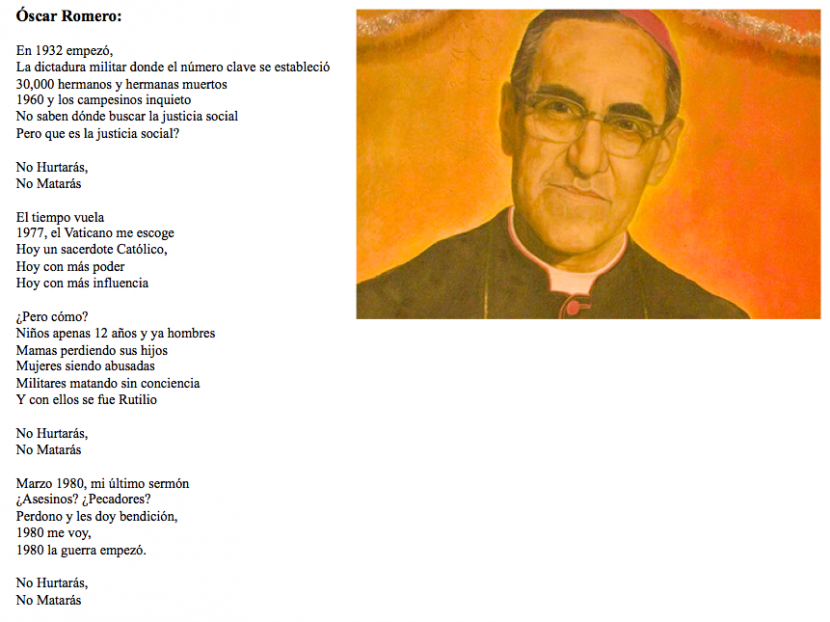
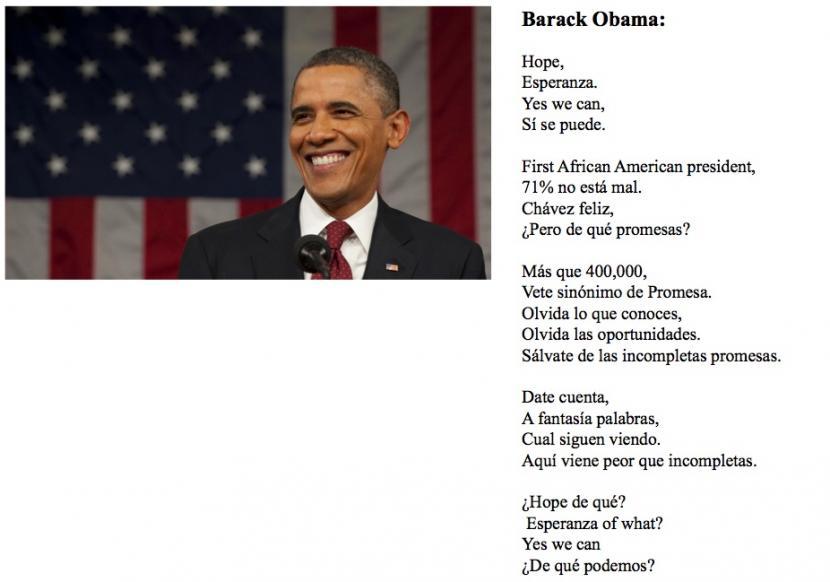
¡Gracias, Claudia, por compartir tus obras e ideas!
Name & Graduation Year: Bao-Tran Le, 2017
Hometown: South Riding, VA
Major: Biology
Minor: Spanish
¿De qué se trata la obra?
Investigué las figuras clásicas y contemporáneas y su importancia en las obras de Sor Juana. Pinté una pintura de Sor Juana en una manera que incorpora ambos los rasgos clásicos y contemporáneos para interpretar a Sor Juana en mis propias formas.
¿Cómo lo hiciste? Es decir, ¿cuál fue la idea principal de la obra y cómo lograste comunicarla?
Pinté una pirámide porque en el Primero Sueno, Sor Juana la describe como un camino para alcanzar el conocimiento, el cual es la meta de Sor Juana durante esa época. También el fondo es oscuro para representar la noche, que es el único momento en que Sor Juana duerme, pues como su alma escapa de las cadenas de su cuerpo. Contrasté los colores claros y oscuros para enfatizar la importancia de la luz en la pintura.
¿Estás contenta con el producto final?
Sí, estoy contenta con mi producto final. Pero, espero que tuviera yo más habilidades artísticas, así que tendría la capacidad de controlar las capas de la pintura y los movimientos del pincel.
¿Por qué estudias el castellano?
Estudio el castellano porque quiero alcanzar un nivel de fluidez para comunicar con otros hispanohablantes. Creo que el castellano me ha ayudado con pensar en una manera diferente, el cual aprecio porque me gusta aprender las nuevas perspectivas en cualquier tema. Mientras se aprende el idioma, también se aprende la cultura, que es interesante y nueva comparada a mi misma cultura. Así es que quiero explorar más de la cultura y el idioma de los hispanohablantes.

¡Gracias, Bao-Tran, por compartir la obra y tus palabras!
Name & Graduation Year: Sara Jane Pancerella (CLAS 2017)
Hometown: Bristow, Va
Majors: Foreign Affairs, Spanish
Minor: Latin American Studies
¿De qué se trata la obra?
La inspiración por mi proyecto creativo, "Las caras de Sor Juana", viene de un deseo para organizar, en una forma visual, las varias caras de Sor Juana que surgen de sus propias obras, sus críticas, y las interpretaciones artísticas de otras. Para lograr esto, yo intenté de recrear el retrato de Sor Juana pintado por Miguel Cabrera en una serie de fotos y videos para representar tres interpretaciones mías de Sor Juana: “La marisabidilla”, “La hombre”, y “La mujer mala.”
¿Cómo lo hiciste? Cuéntanos un poco del proceso creativo.
Mi proceso artístico empezó con la creación de una escena, y escogí la obra de Miguel Cabrera para recrear porque me permitió utilizar el espacio y muestra Sor Juana en su completitud. Identifiqué los elementos claves en esta obra que también aparecen en otros cuadros famosos, elementos que incluyen el traje de monja, el escritorio, los libros en el fondo, el rosario, el mantel rojo, y las plumas. Pienso que son elementos constantes que definen Sor Juana visualmente. El próximo paso, fue para crear estos elementos. Había utilerías que solo necesité colectar como las velas, las plumas, y el mantel rojo, y había otras que yo tenía que hacer. Para el traje de monja, yo usé mi vestido de mi graduación de la escuela secundaria y la combiné con una tela negra para imitar el traje en la foto. En el cuadro por Cabrera, el rosario es muy grandes, así que creé un rosario de cuentas negras de Mardi Gras y una gran cruz de madera. Los escudos de monjas que aparecen en cada foto fueron hechos de fotos imprimidas y platos de papel con pintura negra. Además, creé las portadas de los libros con papel y escribí los títulos de algunos libros para ayudar con visibilidad. Con respeto al espacio, al principio, yo intenté de usar el cuarto de McGregor, pero hay reglas estrictas y los bibliotecarios de Alderman me prohibieron. Afortunadamente, ellos me indicaron hacia el “Sally Brown Reading Room” que yo podía usar sin restricciones. Este cuarto tiene grandes estanterías que parecen similares a las estanterías en el fondo del cuadro pintado por Cabrera, y funcionaría como un estudio perfecto. Después de organizar mis utilerías, el espacio, y los modelos, utilicé todos los elementos para crear tres distintas Sor Juanas.
¿Estás contenta con el producto final?
Estoy muy contenta con el producto final. Enfoqué mucho en las utilerías, pero mis modelos añadieron la chispa que produjo un proyecto tan exitoso. Estoy muy orgullosa que las fotos animen Sor Juana y capturen su actitud. También, me gusta como añadí los Boomerangs y el video porque el movimiento rompe la rigidez de la pintura por Cabrera e incorpora un elemento moderno.
¿Por qué estudias el castellano?
Yo estudio castellano porque siempre he disfrutado el desafío de aprender otro idioma. Decidí continuar con español como una carrera porque cuando vine a UVA, me di cuenta que las clases de literatura española son fascinantes y muy divertidas. Además, el castellano expande mis oportunidades, me da la capacidad de conectar en un nivel más profundo con otras culturas.


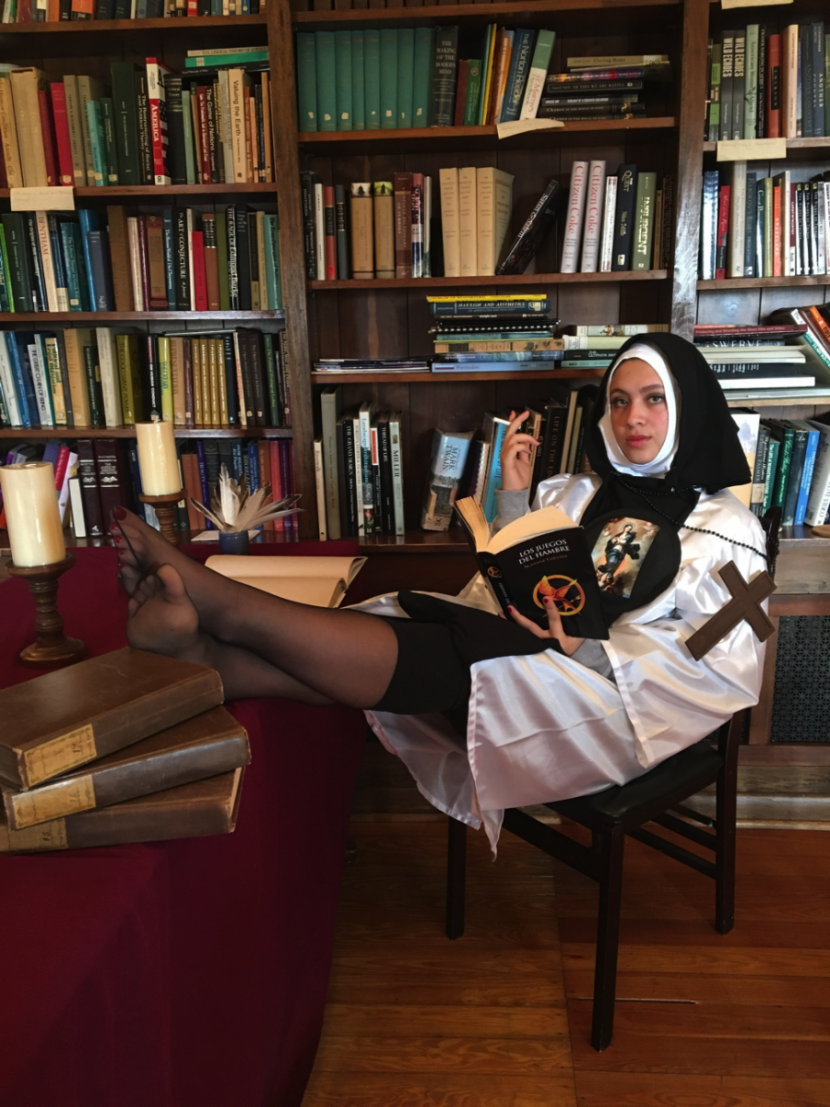
Para ver mayores interpretaciones de "Las caras de Sor Juana", haz click acá.
¡Gracias, Sara, por compartir tu obra e ideas!
Community Engagement
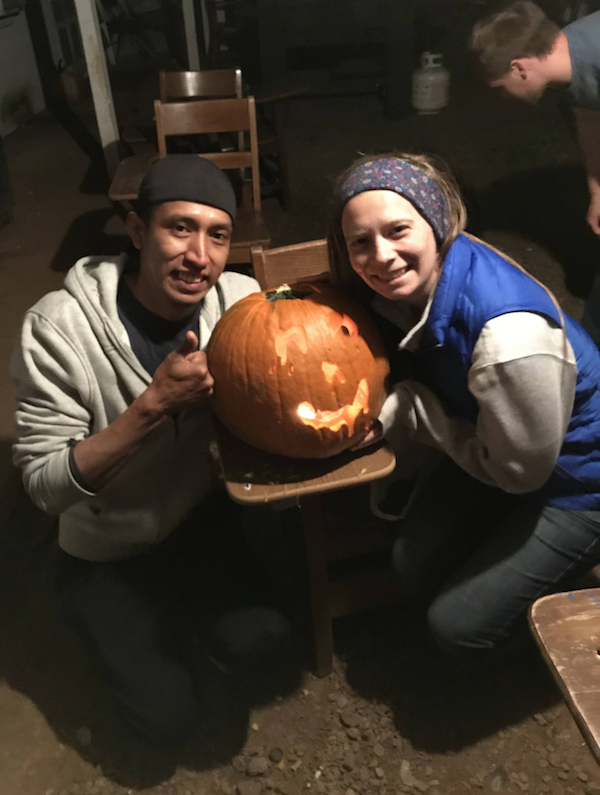
Name & Graduation Year: Katey Summers (CLAS 2018)
Hometown: Annandale, Virginia
Major/s: Estudios latinoamericanos y Desarrollo global
Minor/s: Español
Tell us about your community outreach project:
Para mi proyecto en la comunidad yo participé en LAMA (Latinx and Migrant Aid), un programa de Madison House. Durante el otoño de 2017, yo visité un campamento de migrantes cada miércoles para asistir en las clases de inglés para los migrantes agrícolas. Cada semana, yo trabajaba con la misma persona y le ayudaba con las lecciones de inglés básico. Jugamos juegos lingüísticos para aprender y usar vocabulario, practicamos la pronunciación, y hablamos sobre varias cosas. Nosotros hablamos sobre nuestras familias, tradiciones culturales de México y los Estados Unidos, y de nuestras vidas en general. Para buscar más información, puede cliquear a este enlace del sitio de Web para Madison House (Adult Tutoring y Migrant Camps).
How did you get involved?
Me encontré este experiencia como un requisito de mi clase de SPAN 3030: Si se puede, Community Engagement in Charlottesville. Tenía mucho interés en las comunidades de migrantes porque he tomado algunas clases antes sobre migraciones y quería saber más sobre estos grupos y su impacto en Charlottesville. Por eso, elegí el programa de LAMA que trabaja con el campamento de migrantes.
Why is this project important to you? Why is it important to the community?
Pienso que todo del mundo debe tener la oportunidad de aprender y participar en oportunidades educativos. Aunque los migrantes del campamento solo viven en los Estados Unidos por algunos meses, ellos deben tener acceso a las mismas oportunidades que otras personas tienen. Además, deben ser tratados como seres humanos con respeto y la posibilidad de comunicar con su comunidad estadounidense. Al otro lado, la comunidad debe aprender sobre sus vecinos y crear oportunidades para aprender y entender las perspectivas y experiencias de los migrantes. Para vivir en paz, necesitamos compartir nuestro conocimiento y comunicarse con los demás.
How does your community outreach relate to your coursework at UVa or your career goals after graduation?
UVa siempre ha tenido clases sobre migración, Latinoamérica y español. Estoy muy agradecida que tenía la oportunidad para combinar todos mis intereses y habilidades en esta oportunidad. Creo que la educación es muy importante, y espero poder trabajar en una posición en la que asista a personas hispanohablantes a tener acceso a la educación después de graduarme. Tengo mucho interés en las comunidades migrantes, pues, esta oportunidad de participar en un proyecto en la comunidad me ayudó a aprender más sobre sus realidades y las oportunidades para ayudarles en el futuro.
What's next for the project? Can other Spanish majors/minors collaborate with you?
Creo que este proyecto ocurre cada otoño cuando los migrantes están trabajando en el campo. Necesita inscribirse al programa de LAMA, pero hay oportunidades para participar cada año. También, hay posiciones como pasantías con el grupo que organiza los programas de inglés para los migrantes desde el condado de Albemarle.
¡Gracias, Katie, por compartir tus experiencias, y felicidades por el gran esfuerzo!